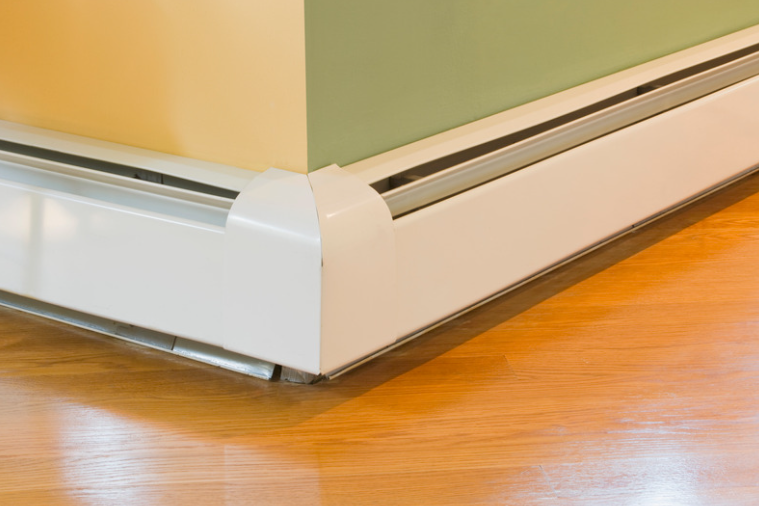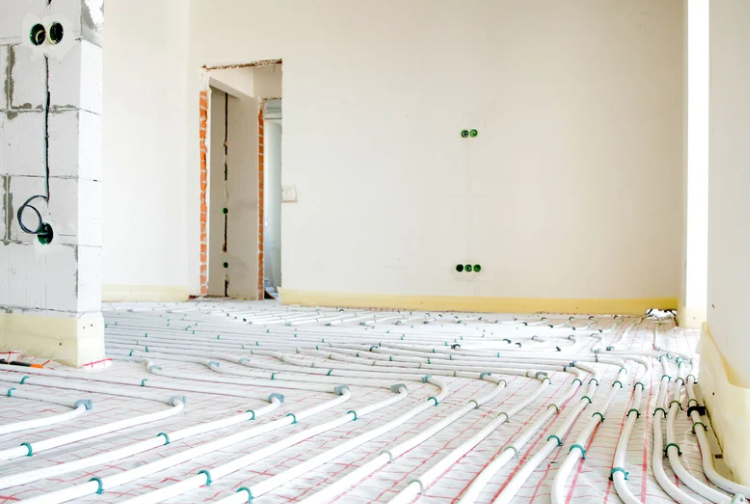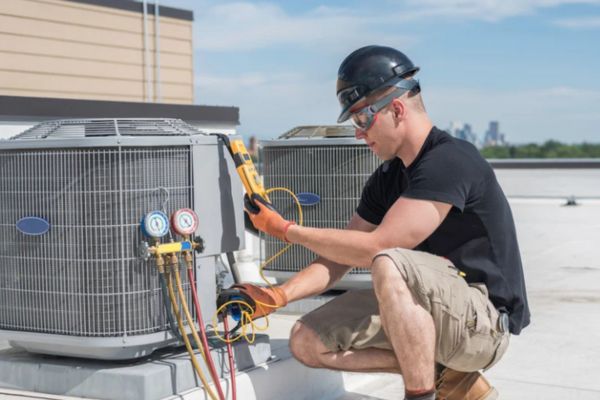If you’re considering upgrading or installing a new heating system, electric baseboard heaters and underfloor heating are two options that stand out as efficient, quiet alternatives to conventional forced air systems. Both options have unique advantages and challenges, depending on your home’s needs and budget.
The Drawbacks of Conventional Forced Air Systems
Forced air heating systems may be familiar but have several notable disadvantages. While they heat your home, they often bring additional concerns for your comfort and health.
- Allergen Circulation: Forced air systems move a lot of air, which stirs up allergens like dust, pollen, and pet dander. This can cause problems for those with asthma, allergies, or other respiratory issues.
- Inefficient Heat Distribution: Vents are usually high on walls or ceilings, meaning much of the heat stays at the top of the room. Since heat naturally rises, this results in uneven heating and cooler living spaces at floor level, where you need the warmth most.
- Noise Issues: Forced air systems can be noisy, with the sound of fans and air blowing through ducts disrupting the peace of your home. Electric heating options, by contrast, operate silently.
The Cost of Electric Heating Systems
Electric heating systems are typically more expensive to operate than natural gas or oil systems, but the overall cost will vary based on several factors. Understanding these can help you decide if electric heat is the right choice for your home.
- Higher Operating Costs: Electricity can be more expensive than natural gas, especially if your local utility rates are high. However, electric heating becomes more viable if you live in an area with relatively low electricity costs, such as the Pacific Northwest or Midwest.
- Energy Efficiency: You can mitigate costs by making your home more efficient. For example, installing baseboard heaters on interior walls instead of exterior ones can reduce heat loss and improve overall efficiency. If you pair electric heating with solar panels, you can drastically cut your ongoing energy bills.

Baseboard Heaters: Pros and Cons
Baseboard heaters are popular for homeowners seeking an easy-to-install, ductless heating option. However, they also have limitations in terms of efficiency and cost, especially for larger homes or extended use.
- Pro: Easy to Install: Baseboard heaters are straightforward to set up and require no ductwork, making them a cost-effective choice for quick upgrades or retrofits. Installation typically costs between $400 and $1,200 per unit, depending on your location and the size of the system.
- Con: Higher Operating Costs: Baseboard heaters can become expensive over time, particularly in colder climates where they’re used frequently. Because they heat the air near the floor and rely on convection to distribute warmth, they can consume more energy than more efficient systems, leading to higher monthly energy bills.
- Pro: Low Maintenance: With no ducts to clean or maintain, baseboard heaters require minimal upkeep. Occasional dusting and ensuring the units are not obstructed by furniture are typically all required.
- Con: Less Efficient Than Other Systems: While easy to install, electric baseboard heaters are less efficient than other electric heating options like heat pumps. They can also struggle to compete with natural gas in terms of cost-efficiency, particularly in colder regions.

Electric Underfloor Heaters: Pros and Cons
Radiant underfloor heating offers a more luxurious heating experience, providing even warmth across the entire floor without blowing air or making noise. However, this option has a steeper price tag, especially during installation.
- Pro: Consistent and Even Heating: Radiant underfloor systems offer uniform heat distribution, eliminating the hot and cold spots commonly found with forced air and baseboard heaters. This makes them a highly comfortable heating option, particularly in rooms with tile or stone floors.
- Con: Expensive and Difficult to Install: Underfloor heating is much more complex and costly, especially in existing homes. The installation involves placing heating mats or wiring beneath the flooring, often embedded in a layer of concrete. Depending on the size of the area and complexity, installation costs can range from $8 to $20 per square foot, potentially adding up to $4,000–$10,000 for a typical room. For whole-home installations, the cost may exceed $20,000.
- Pro: Long-Lasting Heat: Electric underfloor systems are embedded in a thermal mass (such as concrete) and retain heat for extended periods. This makes them incredibly efficient in dry climates, where homes experience significant temperature drops at night but stay warm during the day.
- Con: Flooring Limitations: One downside of underfloor heating is that it may limit your flooring choices. While it works well under stone, tile, or concrete, it is less effective under carpets, vinyl, and some hardwood floors, which can act as insulators and reduce efficiency.
Which System is Right for You?
Ultimately, the decision between baseboard heaters and underfloor heating comes to your specific needs and preferences. Baseboard heaters are easier to install and more suited for smaller spaces or supplemental heating. They’re also a good option for those on a budget who don’t want to invest in a major home upgrade. On the other hand, underfloor heating offers superior comfort and efficiency, particularly in new construction or major renovations, and is ideal for homes in dry climates.
If you prioritize cost-efficiency and easy installation, baseboard heaters are likely the better option. If you value comfort, even heating, and have the budget for the initial investment, electric underfloor heating may be worth considering. Either way, both systems offer the advantages of electric heating: quiet operation, no ductwork, and no allergens stirred up into the air.


